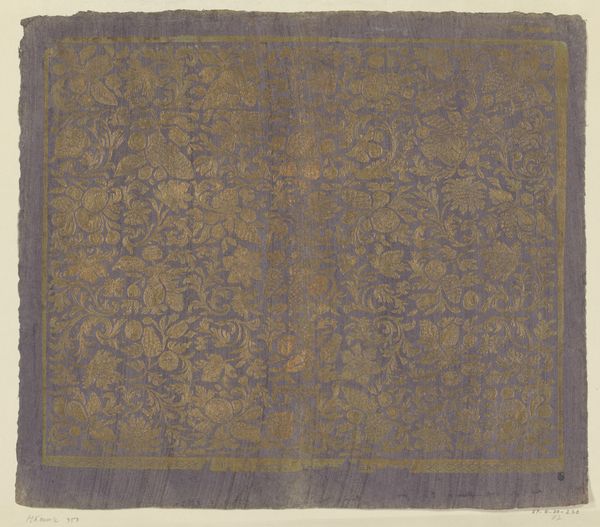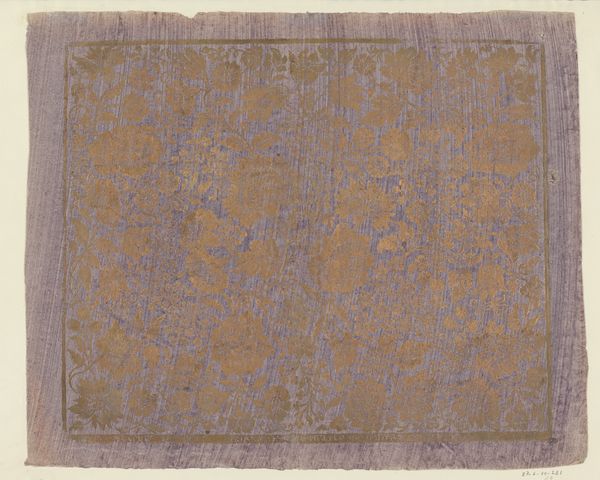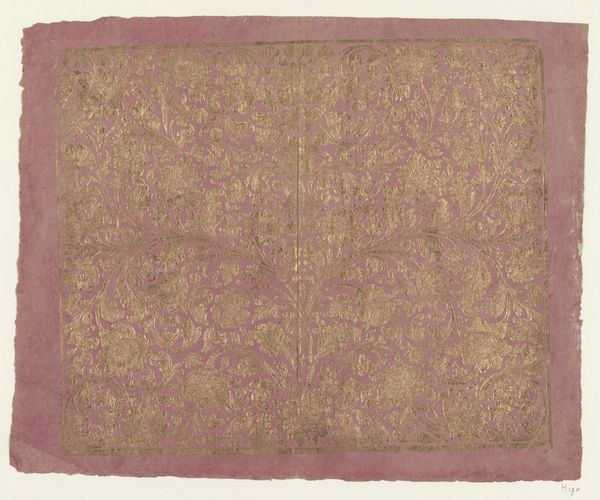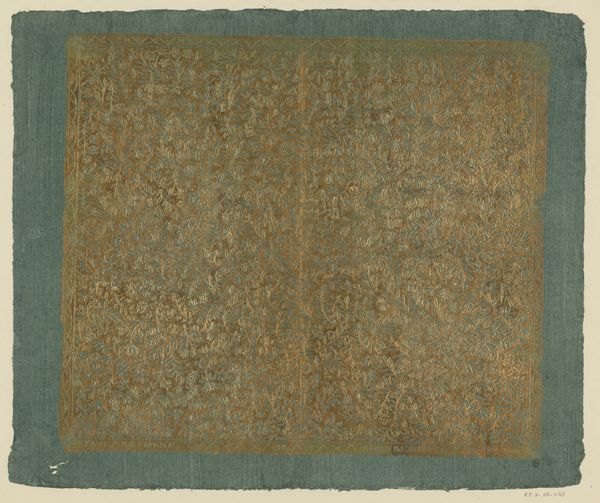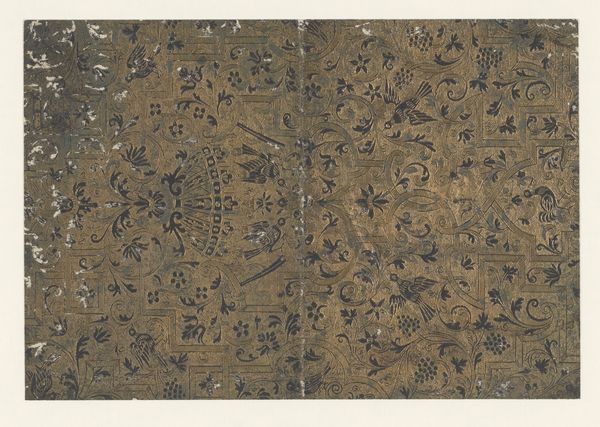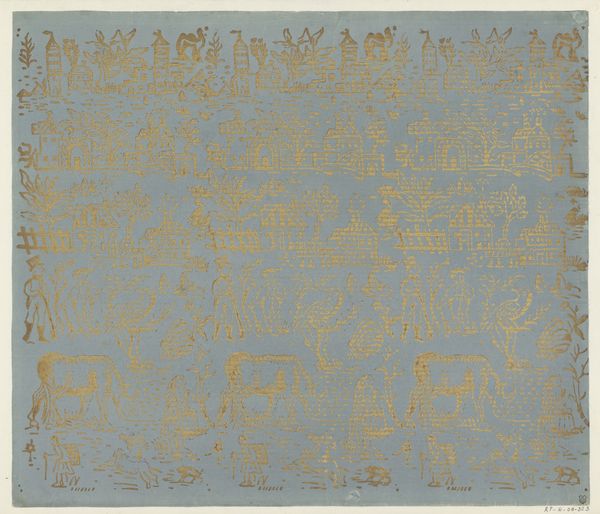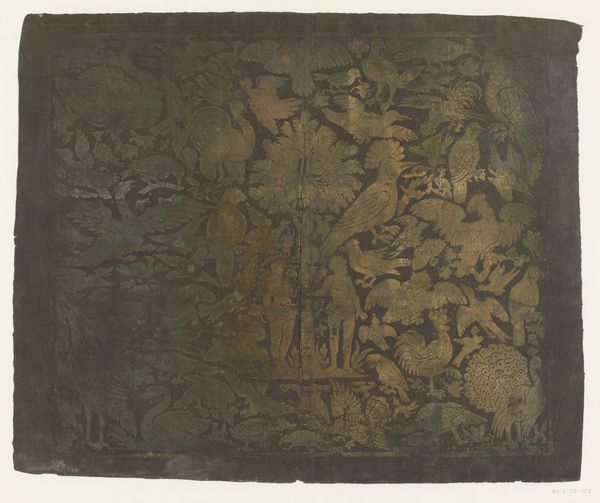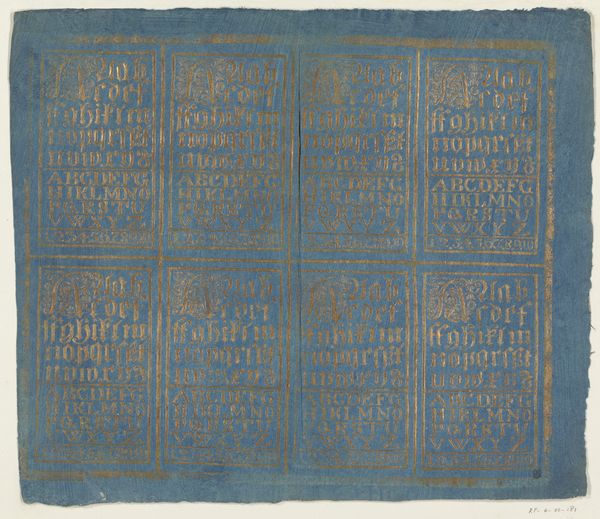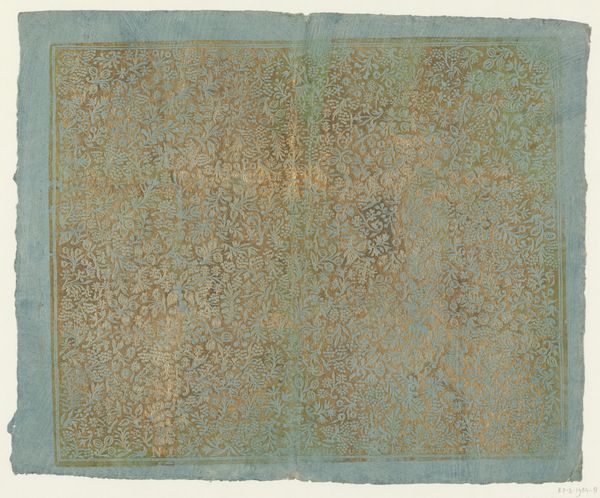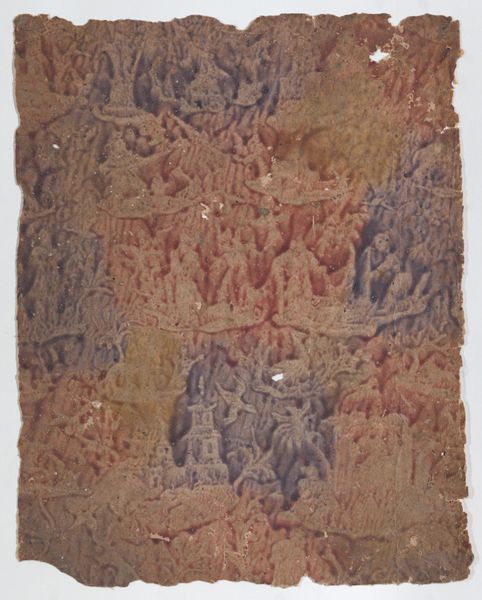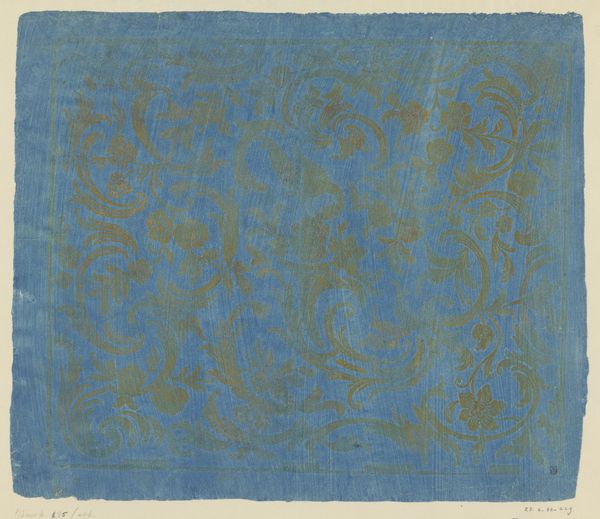
drawing, paper, ink
#
drawing
#
landscape
#
figuration
#
paper
#
ink
#
orientalism
#
genre-painting
#
miniature
#
watercolor
Dimensions: height 333 mm, width 395 mm
Copyright: Rijks Museum: Open Domain
Curator: Welcome. We're looking at a piece called "Blad met dieren," or "Sheet with Animals," likely dating from around 1800. It’s ink on paper and is currently held at the Rijksmuseum. Editor: What strikes me immediately is this dreamy, almost fantastical quality. The layering of animal figures creates a world that feels both decorative and somehow primordial. It reminds me of an elaborate textile more than a drawing. Curator: That's interesting. When I look at it, I see the distinct, almost systematic layering of these animal figures—considering the labor and skill that must have gone into this. What social contexts allowed for this kind of craft? Is this a drawing, or a decorative artwork for wealthy patrons? What do the choices about materials mean for understanding its function? Editor: Absolutely. It's impossible to separate this artwork from the broader context of orientalism at the time. What stories about identity, nature, and civilization are these images telling, both intentionally and unintentionally? What did “exotic” animals mean for European power and scientific discourse at this moment? Curator: Yes, there’s certainly a lens of privilege and colonialism involved here. The choice of ink on paper too. I’d be fascinated to understand what was happening at the paper mill during the time it was made, who the laborers were, and where it would've ended up after. I suspect this isn’t about landscape painting alone, as the file tags suggest, but instead it touches genre-painting also. Editor: For sure, this piece is situated in broader debates about power and representation, not merely naturalistic interests. We're engaging with a narrative, one built on ideas about the East, nature, and even the animal world—which are still important today when we confront human dominance of the environment, not to mention questions about who gets to represent whom. Curator: Seeing art this way demands we question the raw materials and their history, while challenging what separates craft from high art. Editor: Indeed. This drawing prompts questions about colonial legacies embedded within our visual culture. Curator: That's where its power lies.
Comments
No comments
Be the first to comment and join the conversation on the ultimate creative platform.
